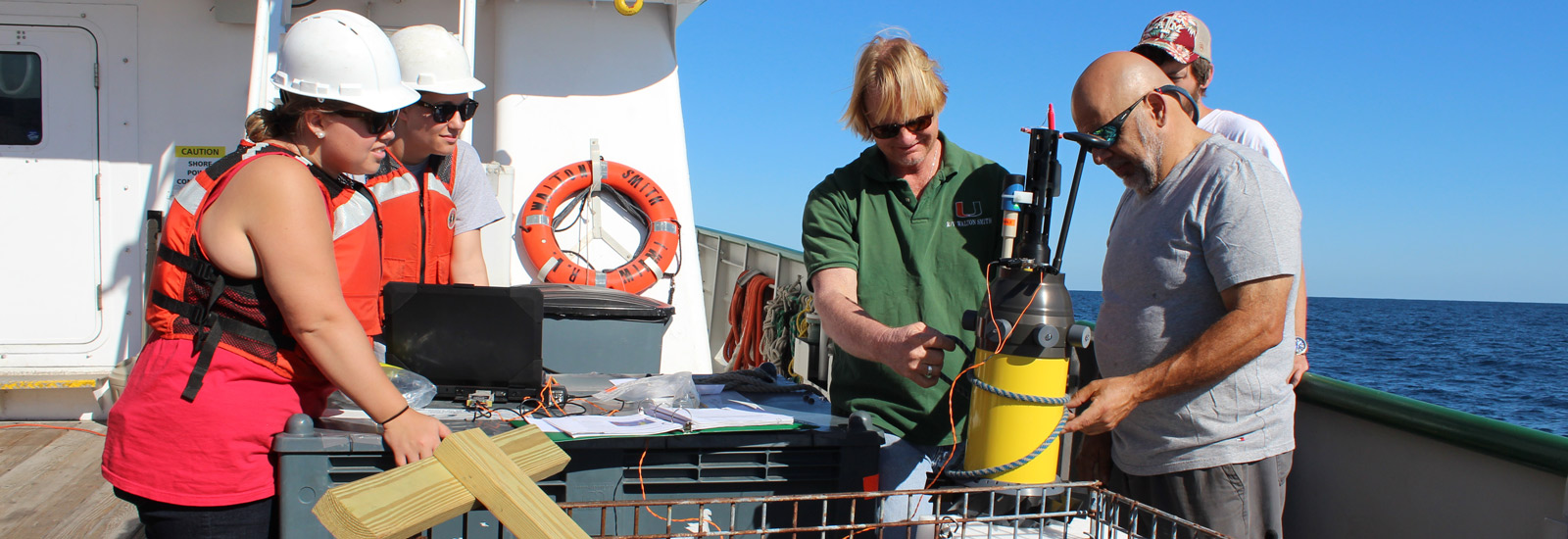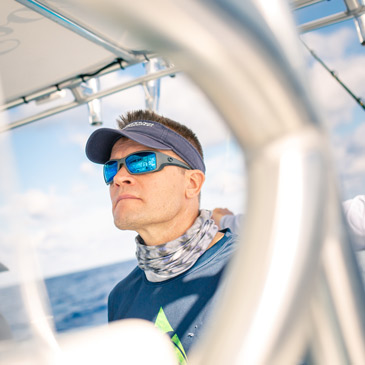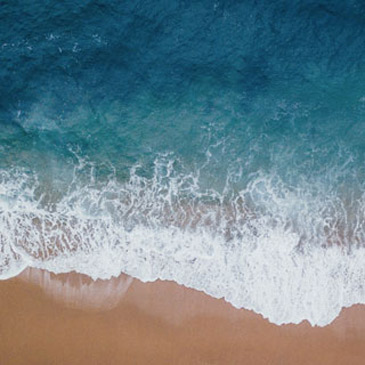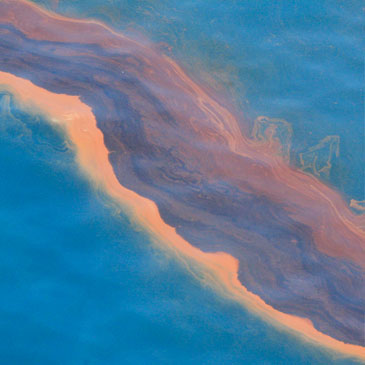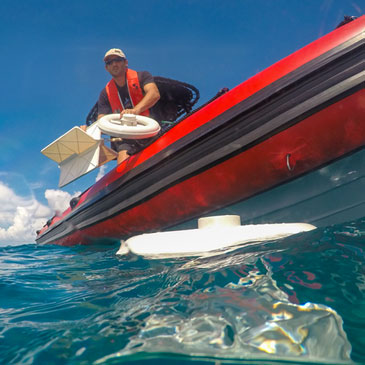by Richard Westlund
UM News
11-13-2019
A University of Miami researcher led an international initiative to develop a deepwater float with chemical and biological sensors to track the flow of hydrocarbons far below the surface currents. The first-of-their-kind floats were deployed in 2017 near the site of BP’s Deepwater Horizon oil rig explosion in the Gulf of Mexico in 2010, one of the nation’s worst environmental disasters.
“This technological advancement brings together the physical and biochemical measurements of sea water that will help guide responses to subsurface oil spills such as Deepwater Horizon,” said Lynn Keith “Nick” Shay, professor in the Department of Ocean Sciences at UM’s Rosenstiel School of Marine and Atmospheric Science. “We now have a scientific blueprint in place for the future.”
While drifters with sensors to monitor physical characteristics like temperature, salinity, current speed and direction are often deployed on the surface waters, the new floats can be programmed to descend as deep as 2000 meters—more than a mile underwater—where the currents and flows are very different than those observed in shallow waters. They also have chemical and bio-optical sensors to measure dissolved oxygen, chlorophyll fluorescence and other attributes that would indicate the presence of hydrocarbon particles.
“For the first time, we are able to link the biochemical aspects to the oceanographic conditions that persist in the Gulf of Mexico, said Shay, who led a scientific team that included Jodi K. Brewster, senior research associate in the Rosenstiel Upper Ocean Dynamics Laboratory, and Benjamin Jaimes, associate scientist, Department of Ocean Sciences, as well as collaborators from Dalhousie University in Halifax, Nova Scotia; North Carolina State University; and Teledyne Webb Research, which produced the new floats in collaboration with the Applied Physics Laboratory at the University of Washington.
The researchers presented their study, Physical and Biochemical Structure Measured By APEX-EM Floats, at the Institute of Electrical and Electronics Engineers Oceanic Engineering Society’s 12th Current, Wave, Turbulence Measurement and Applications Workshop (CWTMA) in San Diego.
Soon after the 2010 Deepwater Horizon explosion, Rosenstiel School researchers began using drifters to study the Loop Current in the Gulf of Mexico and track the movements of the floating hydrocarbons. “But oil was coming up from mile-deep water in the DeSoto Canyon, which has complex water flows,” said Shay. “While aircraft were able to drop profilers to measure the deepwater temperature, salinity and currents, there were no biochemical sensors to trace the hydrocarbons and their derivatives.”
Recognizing the need to fill that knowledge gap, Shay contacted Teledyne Webb Research, which had developed its Autonomous Profiling Explorer floats with electromagnetic sensors (APEX-EM) used in the gulf. In 18 months, Teledyne was able to add the new sensors along with software that allows the floats to move to different depths in the ocean, and change its sampling process based on atmospheric or oceanographic conditions, such as an approaching hurricane.
Using the Rosenstiel’s research vessel, the R/V F. G. Walton Smith, the scientific team deployed 10 of the new APEX-EM floats near the Deepwater Horizon site in May 2017. Eight of the floats sent readings for more than a year, providing more than 10,000 profiles of physical and biochemical properties and uploading their data to the Iridium satellite system through June 2018.
Four of the floats stayed in the Gulf of Mexico and four traveled through the Florida Strait into the Atlantic Ocean. Because of changes in surface buoyancy, one float was trapped below the outflow of freshwater from the Mississippi River for several weeks, but archived its readings and transmitted them once it emerged from the freshwater plume, Shay said.
Shay’s team was also able to reprogram the floats to move to different depths and report more frequently on the biochemical response to cold fronts as well as the wind fields of Hurricanes Irma and Nate. “The capability of the APEX-EM floats to sample faster over shallower depths allowed us to examine complex processes across the base of the surface layer as well as processes at depths,” Shay said.
Looking ahead, Shay said the advanced biosensing floats may also help researchers better understand red tides and other marine issues in the Gulf of Mexico. “By coupling the physical and biochemical models, we may be able to predict where red tides will impact the coast,” he said.
Shay added that these types of research partnerships with academic institutions, technology companies and government agencies can yield a wealth of information in the event of future subsurface oil spills and provide real-world research opportunities for graduate students. “We need integrated ocean sensing at multiple depths to help first-responders,” he said. “Fortunately, we now have a three-dimensional blueprint model that can be used to track future environmental problems. The next step is to make these sensor packages air-deployable for a rapid response”
His research was supported through the Gulf of Mexico Research Institute through a grant to the University of Miami Rosenstiel School of Marine and Atmospheric Science.
Photo: Jodi Brewster/ University of Miami



